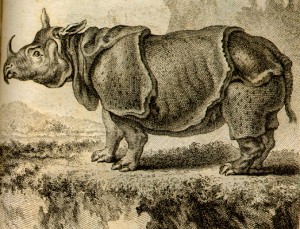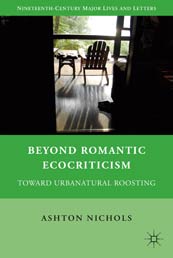(Male Narwal, or Unicorn, 1828)
I. Why a “Romantic” Natural History?
II. Backgrounds: From Aristotle to Erasmus Darwin
III. The Anxiety of Species: Toward a Romantic Natural History
IV. Romantic Science and the Pleasures of Nature
V. Additional Topics in Romantic Natural History
VI. A Romantic Natural History Timeline: 1750-1859
VII. Darwin’s Evolution: A New Gallery of Images
VIII. Natural Historians:

(The Temple of Nature, 1803)
Carolus Linnaeus (1707-78), George-Louis Buffon (1707-88),
Gilbert White (1720-93)
Oliver Goldsmith (1728-74), Erasmus Darwin (1731-1802),
Joseph Priestley (1733-1804)
William Bartram (1739-1823), Thomas Jefferson (1743-1826),
William Paley (1743-1805)
Jean Lamarck (1744-1829), Benjamin Rush (1746-1813),
Alexander von Humboldt (1769-1859)
Georges Cuvier (1769-1832), William Smith (1769-1839),
Geoffray St. Hilaire (1772-1844)
Adam Sedgwick (1785-1873), John D. Godman (1794-1830)
Louis Agassiz (1807-73)
Charles Darwin (1809-82), Henry David Thoreau (1817-62),
Spencer F. Baird (1823-87)
XIX. Literary Figures:

(“The Fertilization of Egypt,” 1791)
James Thomson (1700-48), John Dyer (1700-58),
Thomas Gray (1716-71)
Christopher Smart (1722-71), Thomas Warton (1728-90),
William Cowper (1731-1800)
Anna Laetitia Barbauld (1743-1825), Charlotte Smith (1749-1806),
William Blake (1757-1827)
Robert Burns (1759-96), Ann Radcliffe (1764-1823),
William Wordsworth (1770-1850),
Samuel Taylor Coleridge (1772-1834), Lord Byron (1788-1824),
Percy Bysshe Shelley (1792-1822),
Felicia Hemans (1793-1835), John Clare (1793-1864)
John Keats (1795-1821),
Mary Wollstonecraft Shelley (1797-1851), Letitia Landon (1802-38)
Thomas Beddoes (1803-49),
Alfred, Lord Tennyson (1809-92), Robert Browning (1812-89)
X. Artists and Illustrators:

(Nightingale, Bewick, 1797)
Joseph Wright of Derby (1734-92), Charles Willson Peale (1741-1827)
Thomas Bewick (1753-1828),
Rubens Peale (1784-1865), John James Audubon (1785-1851),
Titian Peale (1799-1885)
XI. A Romantic Natural History Bibliography
(8/2011: Updated Regularly)
Houghton Mifflin has published a teaching anthology
based on the Romantic Natural History hypertext
Click cover image to purchase a paperback copy of Romantic Natural Histories (2004)
See also http://blogs.dickinson.edu/romnat/2012/07/02/urbanatural-roosting/ or click cover image:
to order a paperback copy of Beyond Romantic Ecocriticsm: Toward Urbanatural Roosting (2012)
This site has been recognized for excellence by The New York Times (“Circuits” section),
the BBC (“Education Web”), Romantic Circles (U. of Maryland) and as “Site of the Day” (BLTC Research, UK)
As of November 2012, the site was receiving an average of c. 30,000 hits per month
Tag Cloud
[newtagcloud int=1]






